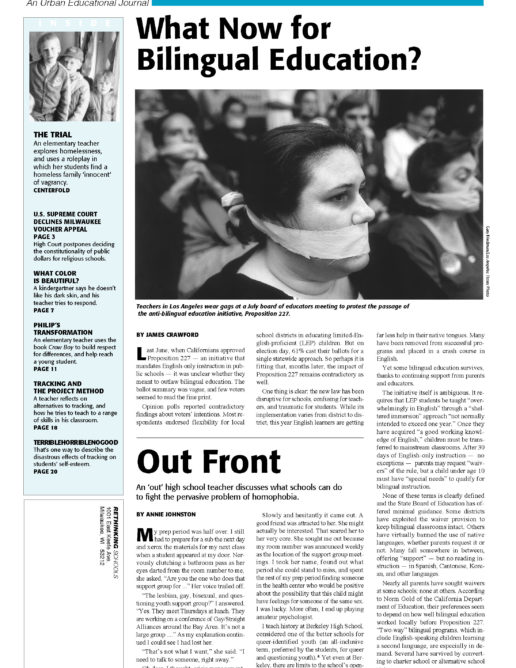Hooking up with Commercial-free Education
By now, anyone who uses the web has become used to the ads. What was once a commercial-free medium is now jammed with promotional banners and product advertisements that flood the screen with nearly every click of the mouse.
Schools seem headed in a similar direction. U.S. Army billboards, Coca Cola vending machines, Pizza Hut food courts, and McDonald’s All-American scoreboards are all on the increase.
These trends make the web site of the Center for Commercial-Free Public Education (http://www.commercialfree.org) all the more useful. The California-based advocacy group has been a leading opponent of Channel One, which gives schools TV and video equipment in exchange for access to a captive audience of young people. Currently Channel One shows its daily 12-minute “news” broadcast, including two minutes of commercials that sell for up to $195,000 for a 30-second spot, to about 8 million students. It reaches about 40 percent of all public middle and high schools in the U.S. The Center’s site has lots of relevant information for resisting these inroads, including research about Channel One’s impact on children, its dubious content, and stories of efforts around the country to oppose its use.
But the Center and its site are not only about resisting Channel One. It has several projects designed to raise awareness about other aspects of the growing commercial penetration of public education. One page of the web site has guidelines for a “Commercialism Walkthrough” that groups can do in their own schools. The Walkthrough directs attention to signs of commercialism in everything from hallway display cases to library resources to curriculum materials. A soon-to-be-finished “School Tour” page indicates what to look for in the cafeteria, on the athletic field, even on the buses that bring kids to school.
Elsewhere a series of questionnaires is available that helps examine the connections between increased commercialism and changes in local school budgets. Sample press releases, letters to the editor and school-board resolutions, as well as a list of publications and organizational resources are also provided to encourage action. In fact there’s a helpful list of suggestions about what you can do, depending on whether you have one minute or one hour.
Easy To Navigate
The site is uncluttered and easy to navigate. It’s also likely to be increasingly relevant . As one page of the Center’s web site puts it: “Commercialism in schools brings up many legal and ethical questions: Who owns the school when it is sponsored by a particular company? Who controls the curriculum? What kinds of long-term effects will commercialism have over teaching and freedom of speech in the classroom? Where do we draw the line?
“The bottom line is that educators already face a difficult job in trying to impart a quality education to all students. Forcing schools to rely on funding from corporate sponsorships and marketing gimmicks will only make that job harder.”

